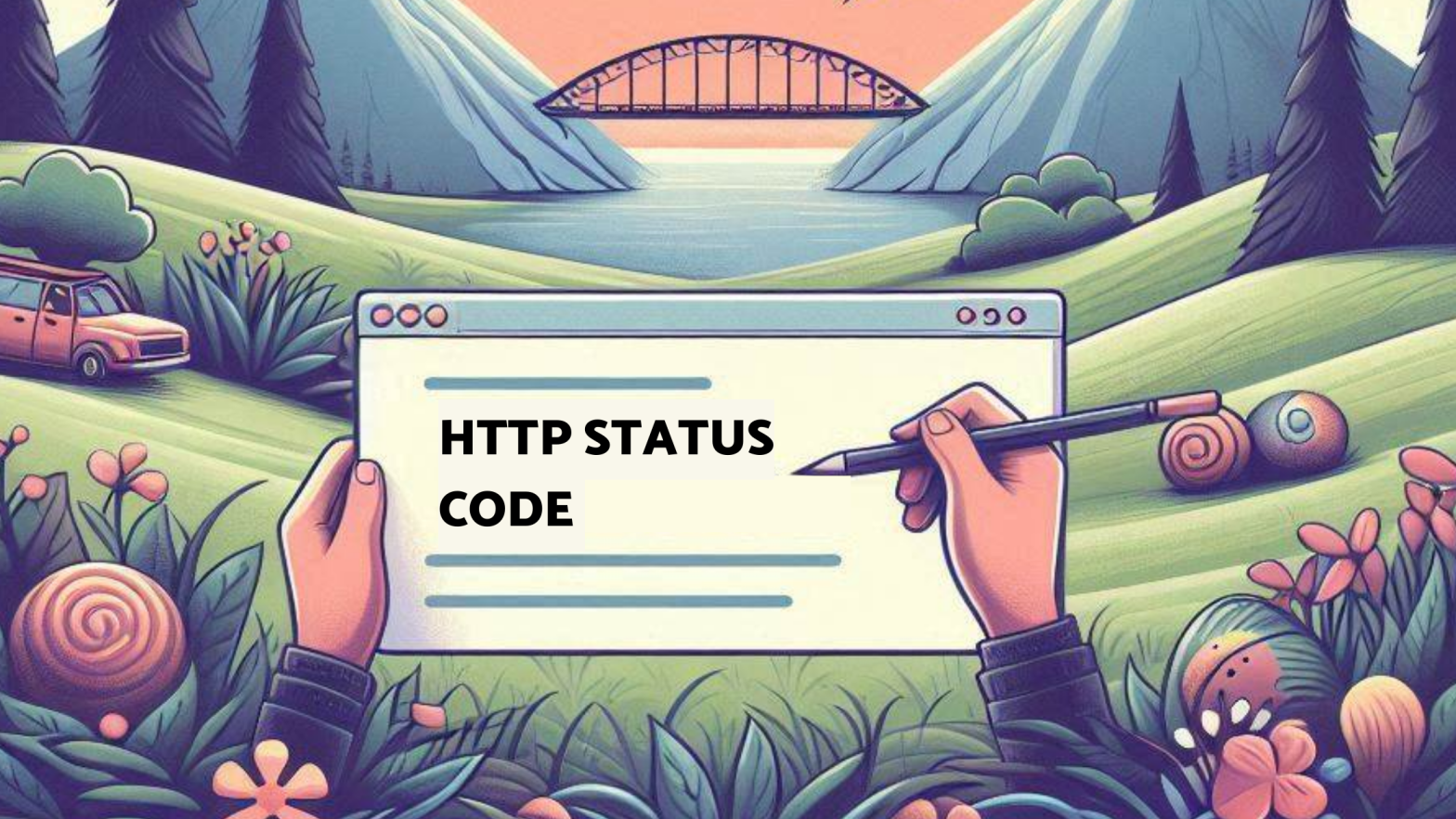HTTP Status Codes Explained: An Overview
 Animesh Pathak
Animesh Pathak
HTTP status codes play a crucial role in web communication, providing vital information about the outcome of requests made to servers. From resolving issues to optimizing performance, mastering these codes can significantly enhance your debugging skills and streamline web development.
This guide will break down the most common HTTP status codes, explaining what they mean and how to handle them effectively.
What is HTTP?
HTTP (Hypertext Transfer Protocol) is the backbone of data communication on the World Wide Web. It is an application layer protocol that defines how clients (like web browsers) request resources (such as web pages or files) from servers, and how servers respond.
HTTP’s primary features include:
Stateless Protocol: Each client-server request is independent, meaning the server doesn’t retain information about previous requests.
Client-Server Model: HTTP operates through a client-server model where clients initiate requests, and servers process and return responses.
Text-Based Protocol: HTTP messages are human-readable and transmitted over TCP/IP, typically on port 80 (or 443 for HTTPS).
Request Methods: HTTP defines several methods like GET (retrieve data), POST (submit data), PUT (update data), and DELETE (remove data).
Status Codes: HTTP responses include status codes indicating the result of a request, such as 200 OK for success or 404 Not Found for missing resources.
Versioning: From HTTP/1.1 to HTTP/3 (also known as QUIC), HTTP has evolved to improve speed and security.
These characteristics make HTTP essential for the seamless retrieval of data across the internet.
The Breakdown of HTTP Status Codes
HTTP status codes are divided into five categories: Informational, Success, Redirection, Client Errors, and Server Errors. Each class provides insights into how a request was processed.
1xx Informational Codes
1xx codes are Informational Responses. The 1xx class of HTTP status codes is often overlooked in day-to-day web development, but they play a crucial role in the communication between a client and a server. These codes indicate that the server has received the request and is continuing the process.
100 Continue: The initial part of a request has been received, and the client should continue with the rest of the request.
101 Switching Protocols: The server is changing protocols as requested by the client.
102 Processing (WebDAV): Inform the client that the server has accepted the complete request but has not yet completed it.
2xx Success Codes
2xx codes are known as Successful Responses. These status codes tell the client that the request was successfully received, understood, and accepted by the server.
200 OK: The request was successful. This is the most common status code and means the server returned the requested data.
201 Created: The request was successful, and a new resource was created. This is often seen in response to POST requests.
204 No Content: The server successfully processed the request, but there is no content to send back. Useful when updating resources without needing to return updated data.
3xx Redirection Code
3xx status codes are Redirection Messages. These codes indicate that the client must take additional actions to complete the request.
301 Moved Permanently: The requested resource has been permanently moved to a new URL. Clients should use the new URL in future requests.
302 Found: The resource is temporarily located at a different URL. Clients should continue to use the original URL.
304 Not Modified: The resource has not been modified since the last request. This helps save bandwidth and improve performance by using cached versions of resources.
4xx Client Code
Client Error Responses are identified by 4xx status codes. These codes indicate that there was an error with the request made by the client.
400 Bad Request: The server cannot process the request due to malformed syntax or invalid data.
401 Unauthorized: The request requires user authentication, typically prompting a login.
403 Forbidden: The server understands the request but refuses to authorize it, often due to insufficient permissions.
404 Not Found: The server cannot find the requested resource, commonly seen when a URL is incorrect or the page no longer exists.
422 Unprocessable Entity: The server understands the request but cannot process it, often due to semantic errors in the request content.
429 Too Many Requests: The client has made too many requests in a short time, triggering rate limiting.
5xx Server Error Code
Status code starting with "5", indicates that the server failed to fulfill an apparently valid request.
500 Internal Server Error: A general error indicating an issue on the server, typically due to an unhandled exception or misconfiguration.
501 Not Implemented: The server doesn’t support the requested functionality.
502 Bad Gateway: The server, acting as a gateway, received an invalid response from the upstream server.
503 Service Unavailable: The server is temporarily overloaded or under maintenance.
504 Gateway Timeout: The server didn’t receive a timely response from the upstream server.
Handling HTTP Status Codes
Understanding these status codes is vital for both frontend and backend developers. Here are some tips on handling them effectively:
Logging and Monitoring
Tracking HTTP status codes is essential for debugging and monitoring. By logging codes, especially errors like 500 Internal Server Error and 422 Unprocessable Entity, you can detect and resolve issues before they escalate.
User-Friendly Messages
When handling client-side errors (4xx codes), display user-friendly messages. For instance, replace "404 Not Found" with a custom message like “The page you’re looking for doesn’t exist.”
Retry Logic
For certain server-side errors (5xx codes), implement retry logic. Temporary errors like 502 Bad Gateway or 503 Service Unavailable may resolve if retried after a few seconds.
Security Considerations
For status codes like 401 Unauthorized and 403 Forbidden, ensure you handle sensitive data securely. Properly authenticate and authorize users to protect restricted resources.
Handling Rate Limits
When clients hit rate limits, respond with 429 Too Many Requests and use headers like
Retry-Afterto inform when they can try again. This helps manage server load while providing a clear user experience.
Conclusion
HTTP status codes are a crucial part of web development, providing insights into what happens behind the scenes when a client makes a request to a server. By understanding and effectively handling these codes, you can build more robust, user-friendly, and efficient web applications. Whether you're debugging an issue or optimizing performance, these status codes are your first line of insight into the health and behavior of your web services.
Frequently Asked Questions
What does the HTTP status code "404 Not Found" mean, and how can I fix it?
The "404 Not Found" status code indicates that the server could not find the requested resource. This often occurs when a user tries to access a URL that doesn't exist. To fix this, ensure the URL is correct and the resource is available. If you're a website owner, check for broken links and update or redirect them appropriately.
Why do I get a "500 Internal Server Error," and what steps should I take to resolve it?
A "500 Internal Server Error" means that something went wrong on the server side, but the server cannot be more specific about the problem. To resolve it, check the server logs for detailed error messages, review recent changes to the server configuration or code, and ensure all dependencies and server resources are functioning correctly.
How should I handle a "401 Unauthorized" error in my web application?
A "401 Unauthorized" error indicates that the request requires user authentication. To handle this, ensure that users are properly logged in before accessing the restricted resource. Implement authentication mechanisms such as login forms, tokens, or OAuth, and verify that the user's credentials are valid and permissions are correctly set.
What does a "302 Found" status code signify, and when should it be used?
The "302 Found" status code indicates that the requested resource is temporarily located at a different URL. It's commonly used for temporary redirects. You should use it when you want to redirect a client to a different URL for a short period without updating the client's bookmarks. For permanent redirections, use the "301 Moved Permanently" status code instead.
What are the best practices for handling "429 Too Many Requests" errors?
A "429 Too Many Requests" status code indicates that the user has sent too many requests in a given period. To handle this, implement rate limiting to control the number of requests a user can make. Provide informative error messages explaining the limit and how long they need to wait before making further requests. You can also use headers like Retry-After to inform clients when they can retry their requests.
Subscribe to my newsletter
Read articles from Animesh Pathak directly inside your inbox. Subscribe to the newsletter, and don't miss out.
Written by

Animesh Pathak
Animesh Pathak
Animesh Pathak is a Developer Relations professional passionate about APIs, testing, and open-source development. As an advocate for Keploy, he actively engages with developer communities, creating content and fostering collaboration to improve testing workflows. Animesh has contributed to various projects and spoken at developer-focused events, sharing insights on API testing, automation, and the evolving DevOps landscape. He thrives on building meaningful connections, whether through technical content, community initiatives, or hands-on mentorship, always striving to make an impact in the developer ecosystem!